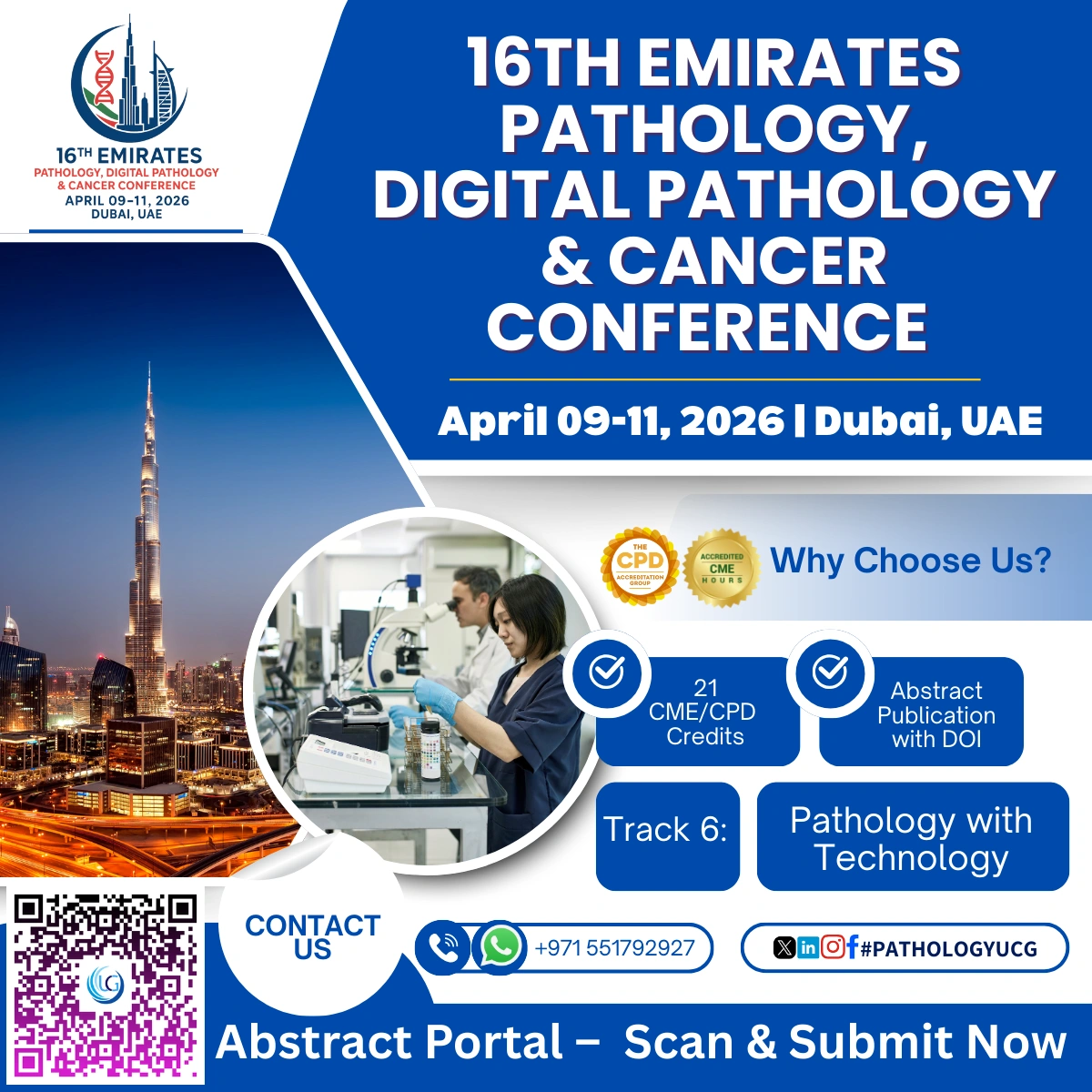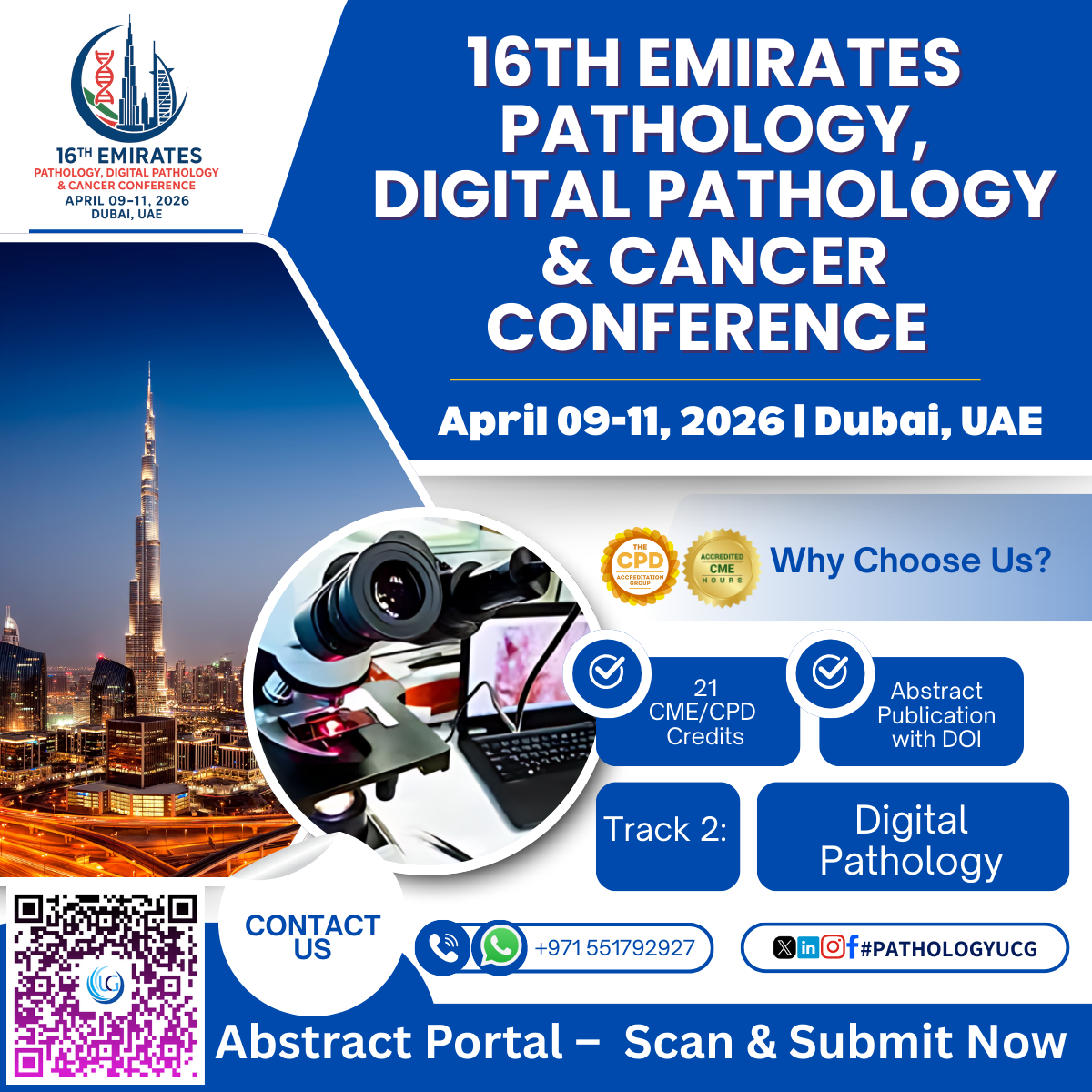



Call for Abstract/ Research Paper:
Sub Tracks: Pathology, pathology lab, pathology diagnosis, pathology...

Call for Abstract/ Research Paper:
Sub Tracks: Digital Pathology, Whole-Slide Imaging,...

Some Sub topics of Pathology with Technology:
Pathology with Technology, Technology, digital microscopy, technological, whole glass slides, Medical Informatics, Diagnostic Technologies, laboratory medicine, clinical services, immunohistochemistry, diagnosis in renal disease, imaging technology, science of pathology, Imaging in genomic testing.
Digital pathology is the application of information technology to the field of pathology to promote the creation, exchange, or sharing of information, including data and images. The main objective is to streamline the complex workflow from specimen receipt to report transmission for anatomical pathology (AP).
Technology is used in pathology: The use of genomic-based molecular techniques, such as polymerase chain reaction (PCR), fluorescence in situ hybridization (FISH), array comparative genomic hybridization (aCGH), and more recently DNA sequencing, has led to the greatest advancements in pathology. Finding chromosomal abnormalities that are locus specific or unbalanced, include a net gain or loss of genetic material, and are connected to a particular disease state is accomplished using all of these techniques. Each contributes to the specific apps that pathologists use. Pathologists still use microscopes as the gold standard for identifying and diagnosing cancer. There is a valid reason for this. Pathologists typically make their diagnoses without using any empirical evidence. They can assess from experience the chance that a sample is aberrant by looking at a well-stained slide alone and altering the focal planes on the optical equipment. However, pathologists have embraced more tests to help in completely identifying a patient’s ailment, to the point where in some situations, they are able to tell the referring doctor of the medication the patient is likely to respond to.
New Techniques:
Multiplexing is the localization of many protein and related species antibodies in a single segment from the same material. Multiplexing facilitates the localization of critical proteins and their simultaneous interaction with distinct cell compartments or cell types. A cell’s various characteristics can be measured all at once. Novel investigations in digital pathology are emerging through the use of new multiplexing techniques, automated multispectral slide imaging tools, and new protein expression technologies. The immunohistochemistry (IHC) methods and multispectral analysis with the previously mentioned image processing and pattern recognition techniques are the main focus of contemporary oncological examinations. The expression profiles of each marker were examined to determine the value of this novel multiplex IHC method. The application of WSI and digital pathology technologies has the promise of increasing workflow efficiency, balancing workloads, and enhancing image integration in information systems. Powerful computer-based algorithms will aid in the integration of all the information that can be extracted from a tissue sample using sophisticated, automated, and miniaturised technologies.
The two main aspects promoting the use of digital pathology in clinical practise are using standards and developing and validating image analysis tools.